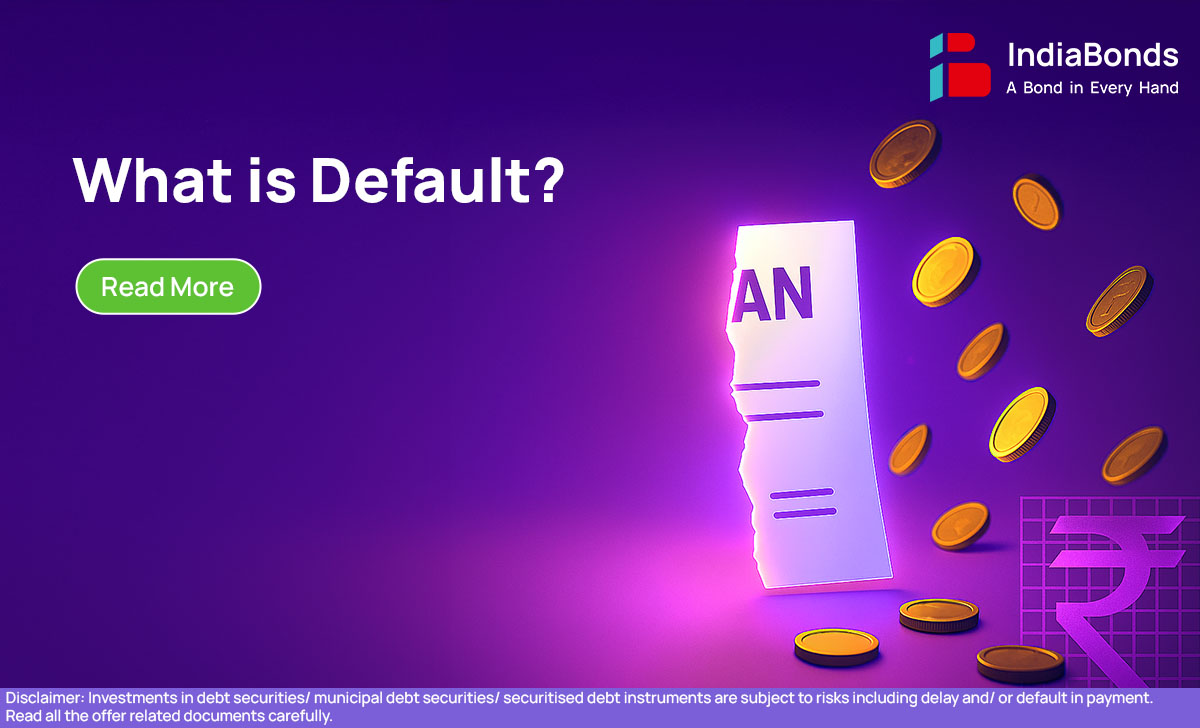What is Default?

Money runs on promises. When someone cannot keep up with those promises—like paying back a loan or honoring a contract—it’s called a Default. It sounds technical, but in reality, Default is simply about trust being broken in finance. And once trust is broken, the effects spread quickly.
What Is a Default?
People often ask: what is Default in finance? The answer is simpler than it sounds. Default happens when a person, business, or even a government doesn’t live up to financial obligations. The Default definition is basically a missed payment or a broken contract. But the Default meaning stretches further—it reflects reliability. Think of it like this: if a friend keeps borrowing money but never pays back, you eventually stop trusting him. The same thing happens in financial markets—Default leads to mistrust, and mistrust makes borrowing more difficult.
Types of Defaults
Defaults come in different forms. Let’s look at the common ones:
- Payment Default – Missing a scheduled EMI or bond interest.
- Technical Default – Breaking terms of a loan, like failing to keep collateral intact.
- Strategic Default – When borrowers choose not to pay even though they can, usually to force negotiations.
- Sovereign Default – When an entire country cannot honor its debt.
To put this into perspective: an individual skipping a home loan EMI is a payment Default. A company that doesn’t maintain required debt ratios might fall into technical Default. Some large corporations in India have been known to delay payments even when they had funds, hoping lenders would restructure terms—this is closer to a strategic Default. By recognizing these types, investors and borrowers can better understand that Default is not just about money running out—it can also be about choices, rules, and circumstances.
General Implications of Defaulting
Defaulting carries consequences that go beyond the immediate missed payment. For individuals, it can damage credit history, bring penalty charges, or even lead to property loss if loans are secured. For businesses, the word “Default” alone can scare away investors, reduce stock prices, and bring in stricter borrowing conditions. For lenders and investors, it creates losses and uncertainty. On a larger scale, multiple Defaults erode market confidence and force regulators to step in. Think back to the IL&FS crisis in India—one Default shook the confidence of the entire debt market. That’s the power Default has—it spreads like ripples in water.




Defaulting on a Futures Contract
Default is not restricted to loans and bonds—it also shows up in the derivatives market. In a futures contract, two parties agree to trade at a future date. If one side doesn’t honor the deal, that’s a Default. For example, a trader might promise to deliver wheat on expiry but fail to provide it. Exchanges like NSE and BSE have systems like margins and clearinghouses that reduce the risk of such Defaults. Without these safeguards, confidence in trading would collapse. Futures markets survive only because Default is tightly managed before it even occurs.
Example of Default
The IL&FS Default of 2018 is one of the most famous examples in India. This infrastructure giant missed payments worth thousands of crores, and the shock waves hit banks, mutual funds, and even small investors. Another example is Kingfisher Airlines, which stopped repaying its loans, leaving lenders with huge losses. These Defaults weren’t just headlines—they reshaped rules, led to tighter supervision, and reminded investors that even big names can fail. Real-world Defaults like these show why diversification, credit ratings, and due diligence are crucial for every investor.
How Will I Use This in Real Life?
You don’t have to be a banker to understand Default—it plays out in daily life too. Miss an EMI on your car loan? That’s a Default. Pay your credit card bill late? That’s a Default as well. Even a landlord not getting rent on time can feel like a Default from their side. For investors, knowing about Default helps when choosing bonds or fixed-income products. A quick glance at credit ratings or repayment history can save you from future stress. Default meaning, in the simplest sense, is a reminder that money promises need discipline. The more careful you are, the safer your financial journey becomes.
Conclusion
Default may sound like a jargon-heavy word, but in reality, it’s about promises not kept. Whether it’s an EMI, a corporate loan, or a government bond, a Default creates losses and shakes confidence. The takeaway is clear: avoid stretching beyond your financial means, understand risks before investing, and keep commitments intact. In finance, trust takes years to build but only one Default to break.
FAQs
Q1: How is defaulting on secured debt different from unsecured debt?
With secured debt, like a home loan, the lender has the right to take back the asset if the borrower Defaults. With unsecured debt, like credit card dues, there is no asset pledged, but Default still damages credit scores and can invite legal action. The pain of losing collateral makes secured debt Defaults more direct and severe.
Q2: Can you share an example of Default?
Sure. IL&FS in 2018 failed to meet repayment obligations, shaking the debt market. On a smaller scale, if someone delays paying a personal loan EMI, that too is a Default. The size may differ, but the principle is the same—money that was promised didn’t arrive on time.
Q3: What happens after a debt Default?
The outcome depends on the type of Default. For individuals, it could mean penalty fees, lower credit ratings, or even loss of property. For companies, Defaults may lead to bankruptcy or restructuring. For lenders and investors, Defaults create losses. And if many Defaults pile up in the system, the economy itself can slow down.
Disclaimer : Investments in debt securities/ municipal debt securities/ securitised debt instruments are subject to risks including delay and/ or default in payment. Read all the offer related documents carefully.



















































